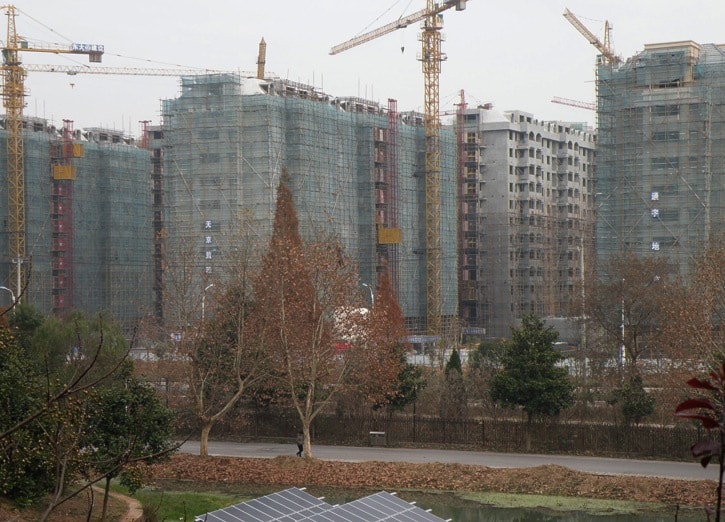NANJING, CHINA B��Ԫ������ַ� ItB��Ԫ������ַ�s a four-hour bullet train ride from Beijing to this 2,000-year-old former capital city on the Yangtze River.

The electric train glides so smoothly itB��Ԫ������ַ�s hard to accept the information ticker above the door showing the speed passing 300 km/h. Tidy farms whiz by in a morning haze after the seemingly endless urban landscape of Beijing finally recedes.
Among the sights emerging from the smog is a coal-fired power plant, its smokestacks and cooling towers surrounded by high-voltage lines carrying electricity to run the trains and light the glittering skyscrapers of the cities.
Alongside the traffic gridlock, NanjingB��Ԫ������ַ�s streets boast bike lanes that VancouverB��Ԫ������ַ�s mayor can only dream about, teeming with electric scooters and tradesman tricycles along with old-fashioned muscle-powered bikes. But like the trains and the Tesla sports cars of the wealthy Chinese, these battery-powered conveyances are mainly running on coal.
China is confronting its coal addiction. The National Energy Administration officially booked into rehab in April, announcing that the next 200 planned coal power plants may not be built, and those already approved will be postponed until at least 2018.
Annual coal consumption has actually started to decline slightly after rising from three billion tonnes to five billion over the last 15 years.
The outskirts of Nanjing, population seven million and soaring, are dotted with construction cranes. In China they build high-rises in clusters of eight or a dozen at a time.
At Nanjing Tech University, engineers are working on advanced wood construction techniques. Working with Canada Wood, the industry-government agency with trade offices in Asia, they are building arched bridges and public buildings to demonstrate the stylish carbon sinks that can replace concrete.
Nanjing is the commercial centre of Jiangsu, designated as the pilot province for residential and commercial wood construction.

Coal-fired power plant, south of Beijing near Nanjing.
While in Beijing, I attended a conference on illegal logging, co-sponsored by ChinaB��Ԫ������ַ�s State Forest Administration and the Canadian Forest Service. The need for a change in construction was illustrated with a few numbers from a Chinese official.
At current consumption rates, China uses as much concrete in two years as the U.S. would in a century. The fuel- and carbon-intensive kilns that make cement are chewing through ChinaB��Ԫ������ַ�s supply of limestone at a rate that it would cause it to run out in 30 years.
A State Forest Administration official outlined efforts to certify wood sources used by China, which has cracked down on unregulated logging within the country.
He dismissed as B��Ԫ������ַ�rumoursB��Ԫ������ַ� the suggestion that China is one of the biggest importers of wood from places like Indonesia, which strips and burns its rainforests to plant vast areas of palm oil trees. China has sealed its border against imports from Burma, another environmental outlaw state, but still imports from Russia and other questionable sources.
(When I checked these B��Ԫ������ַ�rumoursB��Ԫ������ַ� from my hotel room later, the censored Chinese internet allowed a Wikipedia page that described China and Japan as the biggest buyers of illegal wood, but the links to sources were all blocked, along with Google and Twitter.)
Here in B.C., we are indoctrinated from primary school to TV news with the notion that all logging is bad, especially ours. Nothing could be further from the truth.
As our urban protester community strives to keep the 20-year-old B��Ԫ������ַ�war in the woodsB��Ԫ������ַ� alive, the rest of the world is moving on. And that includes newly empowered across B.C., who are redefining the concept of ethical wood and aiming to bring needed prosperity to their communities.
Tom Fletcher is B.C. legislature reporter and columnist for Black Press. Email: tfletcher@blackpress.ca Twitter:



